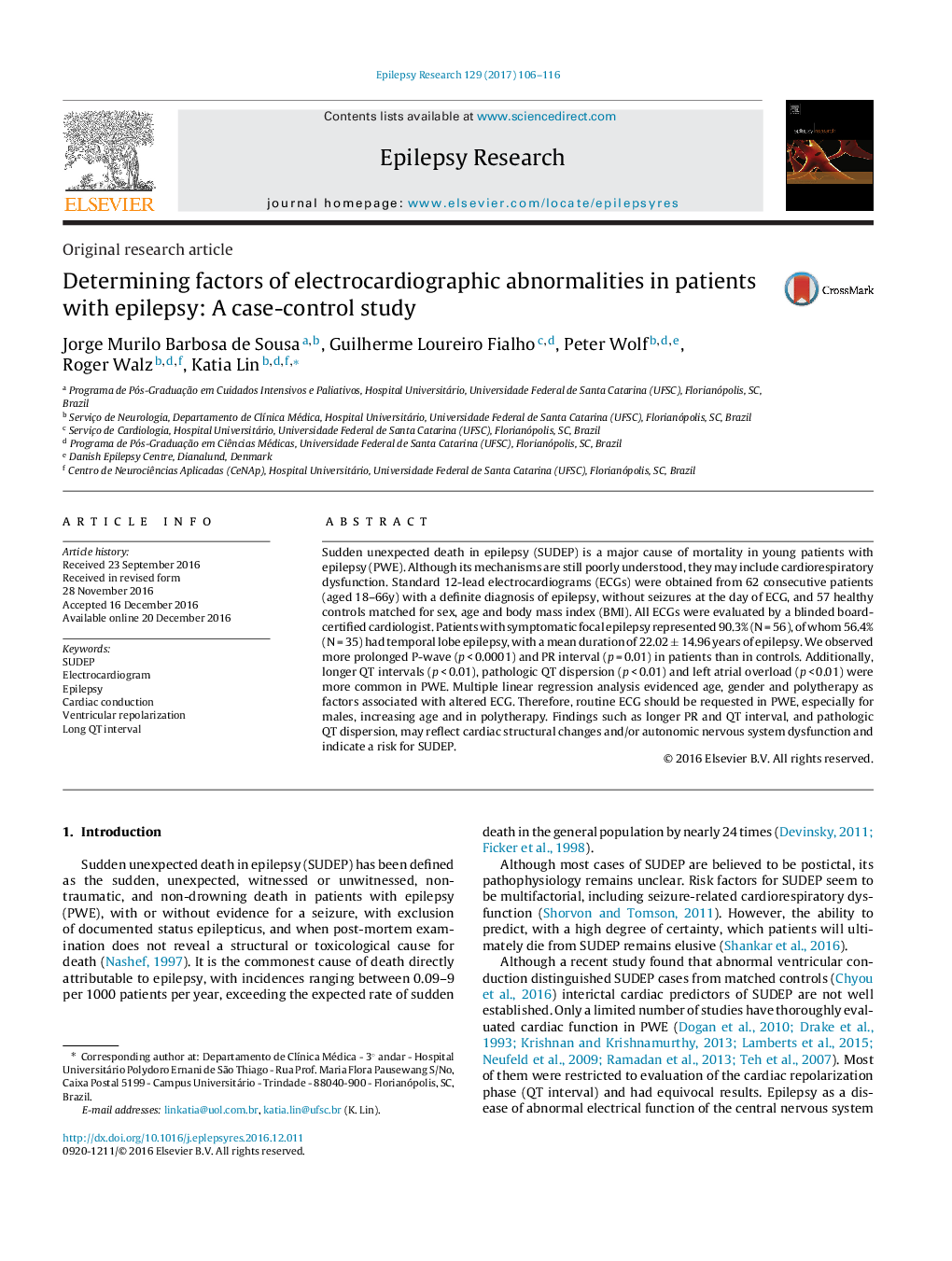| Article ID | Journal | Published Year | Pages | File Type |
|---|---|---|---|---|
| 5628778 | Epilepsy Research | 2017 | 11 Pages |
•62 epilepsy patients × 57 healthy matched controls underwent interictal routine ECG.•PWE had more prolonged atrial and ventricular conduction pattern.•Left atrial enlargement and pathologic QT dispersion were more frequent in PWE.•Male gender, increasing age and polytherapy were associated with an altered ECG.
Sudden unexpected death in epilepsy (SUDEP) is a major cause of mortality in young patients with epilepsy (PWE). Although its mechanisms are still poorly understood, they may include cardiorespiratory dysfunction. Standard 12-lead electrocardiograms (ECGs) were obtained from 62 consecutive patients (aged 18–66y) with a definite diagnosis of epilepsy, without seizures at the day of ECG, and 57 healthy controls matched for sex, age and body mass index (BMI). All ECGs were evaluated by a blinded board-certified cardiologist. Patients with symptomatic focal epilepsy represented 90.3% (N = 56), of whom 56.4% (N = 35) had temporal lobe epilepsy, with a mean duration of 22.02 ± 14.96 years of epilepsy. We observed more prolonged P-wave (p < 0.0001) and PR interval (p = 0.01) in patients than in controls. Additionally, longer QT intervals (p < 0.01), pathologic QT dispersion (p < 0.01) and left atrial overload (p < 0.01) were more common in PWE. Multiple linear regression analysis evidenced age, gender and polytherapy as factors associated with altered ECG. Therefore, routine ECG should be requested in PWE, especially for males, increasing age and in polytherapy. Findings such as longer PR and QT interval, and pathologic QT dispersion, may reflect cardiac structural changes and/or autonomic nervous system dysfunction and indicate a risk for SUDEP.
